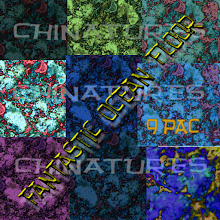Hallucinations, Oliver Sacks. New York: Alfred A. Knopf, 2012. e-book, 261 pps., including bibliography.
Along with my traumatic brain injury came visual disturbances. Like the patients in Oliver Sacks latest book Hallucinations, I was hesitant to confide in my primary care doctor some things that happened in my vision during and after my motor vehicle accident. I called them "sort of hallucinations." I was vaguely aware that those words weren't quite right. I knew that I hadn't become schizophrenic overnight. I have always had hypnagogic hallucinations. I didn't think anything of those. I experience patterns and swirls when I tumble into sleep. They are benign. Some other hallucinations-- the kind that told a few of my acquaintances to do bad stuff or caused them to talk with external voices or see stuff that other folks couldn't see while wide awake-- landed them on mental hell units on heavy doses of anti-psychotics. After hearing my description of the new stuff, the doctor scribbled "visual disturbances" in his notes. "Visual disturbances" became how I described what happened to me during my car accident and occasionally even now eight years out to subsequent neurodocs and to the shrink who understands brain injury.
How refreshing it was for me to read an entire book by a favorite author dedicated to visual disturbances and hallucinations with various neurological etiologies! I read Oliver Sacks because his compassion for his patients comes through the pages, because he imparts his experiences and knowledge against an extensive background of other neurology books, and because his words often normalize some of my experiences with my traumatic brain injury. Ah, I think, so that is the part of the brain that is probably responsible for this or that symptom. The explanations in Hallucinations, like the explanations in all of Oliver Sacks' books, make sense to me as a lay person.
The brain is rather an exciting organ. I didn't realize exactly how exciting the brain is until I started learning it after my injury. I am not one of those people who romanticize my t.b.i. I much would have preferred to remain as I was before my car was slammed into a house by a driver who was high on marijuana. The reality of my brain as it is today forces me to grapple with things that I was perfectly happy not being aware of pre-accident. When I was able to read again, instead of the science fiction and fantasy books that I used to reach for, I reached for computer books and Oliver Sacks. It is only within the last two years that my brain has healed up enough for me to enjoy S.F. & F. once again. Even so, I continue to read factual sorts of books now, far more than I used to. My tastes in reading have been mitigated as a direct result of my injury. Although I was not the sort of person that one would have described as "average" before that fateful day, I am far from average now. Briella is the name that I have given to my post-injured brain. Still brilliant, just a bit sideways. Skewed. Not my preference, but reality. It is by choice that I have sought out other traumatic brain injury survivors. By necessity I have to make accommodations for Briella. My fractured brain now has a veritable host of perceptual problems and sensations. At times, my eyes act like they are on their own acid trip.
Besides the stuff in Hallucinations that I related to brain insults and brain injuries in general, there was more that captivated me. I had not known about Charles Bonnet Syndrome before reading this book. And had not even suspected its' existence. The neurological explanations for states of bliss or what I and others have called "the zone" are practical and useful in understanding why some folks like to jog or run and folks like me take to the woods on an almost daily basis. I understand a bit more about the natural reasons behind states of religious fervor and also trances. Oliver Sacks continues to be number one on my list of who I would most like to have a cup of tea or coffee with sometime.
sapphoq reviews says: Hallucinations is a most excellent book. Anyone who has had visual disturbances and who is looking for a practical explanation would do well to pick up this book. Those who are not familiar with the architecture of the brain would be able to follow along with Hallucinations with no difficulty. Readers who have some rudimentary knowledge of brain structure and function will find that their knowledge will enhance enjoyment of Hallucinations. Highly recommended.
Subscribe to:
Post Comments (Atom)




No comments:
Post a Comment